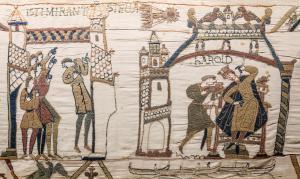Blog
Weaving a Lie
13 May 2018
 Wikipedia
WikipediaI’m not a journalist. I’m a scientist who sometimes writes about science. There’s a difference, or at least there should be. There are some similarities. Both scientists and journalists should seek to uncover the truth. Both should rely upon evidence to substantiate their claims. Both should aspire to a level of professional integrety that can instil trust in the general population. But journalists are specifically trained in writing and how to present a story honestly and accurately. How to track down sources and how to determine what evidence is sufficient to go to print. While I try to maintain the same level of honesty and accuracy in my blog posts, I have no formal training in journalism. So again, I am not a journalist.
But for all you science writers out there, I’m going to go out on a limb and say that if all you do is regurgitate bad press releases, you are not a journalist either. I don’t care if you’re trained as a journalist, I don’t care if you are pressed for time and just need to get a story out. If you’re just rewriting press releases, you aren’t a journalist. And you need to stop.
Case in point: there’s a story going around about how the Bayeux Tapestry could hold clues to the existence of planet nine. This is simply not true, and any journalist could easily figure that out. But a press release made the claim, and so some science writers repeated it because it makes a great headline. “Bayeux Tapestry could help NASA unravel mystery of Planet Nine,” “Proof of ‘Planet Nine’ May Be Sewn into Medieval Tapestries,” “Ancient Britons may have seen Planet 9.”
That is a lie. There is no evidence of planet nine in the Bayeux Tapestry, nor any other medieval tapestry.
The argument is that if planet nine exists, it could disturb the paths of objects in the Kuiper belt, and this would cause comets to sweep through the inner solar system. By analyzing the appearance of comets in the sky over a thousand years, we might be able to determine the presence and location of a planet in the outer solar system. The Bayeux tapestry does contain a representation of Halley’s comet, so if other tapestries or medieval documents also describe comets maybe they could tell us the location of planet nine.
This is nonsense.
The Bayeux Tapestry does contain a representation of a comet. Since the tapestry portrays the Battle of Hastings in 1066, we know the time period in which the comet appeared. We know it’s Halley’s comet because we know its orbit very well, and we know it appeared in the sky in 1066. Observations of the 1066 Halley appearence were also recorded by Chinese astronomers. It’s because of astronomical records that we know the Bayeux comet is not a fictional comet. Not the other way around. The Bayeux Tapestry is not an astronomical document, and it can’t be used to verify planet nine. Other medieval tapestries don’t have representations of comets, and there aren’t enough accounts of comets in medieval Europe to help find planet nine (assuming it exists).
Can medieval astronomy help answer questions about modern astronomy? Sure. Might there be some interesting astronomical events lurking in historical records? Absolutely. But ancient Britons did not see planet nine. They did not sew detailed astronomical data into tapestries. To claim so is to weave a lie.
It might sound as if I’m just ranting again about bad science writing. Yes, but the reason I’m upset about it is because these kinds of lies spread. They trickle down to fringe websites, and they convince people that Nibiru is real, or the Earth is flat, or climate change is a lie. These kinds of science articles aren’t just harmless entertainment. They peddle ignorance and make it more difficult to present the truth.
So stop it, science writers. You’re better than that. Start acting like journalists again, because we really need you right now.